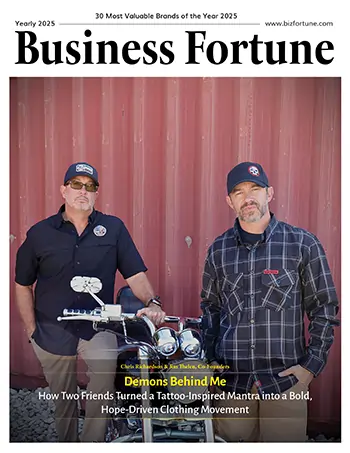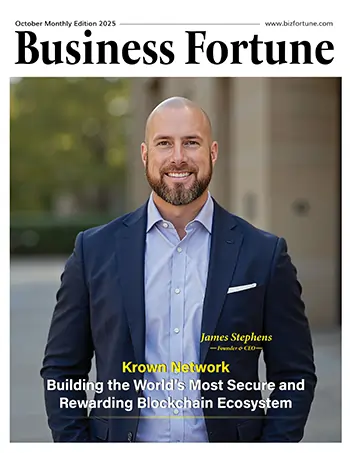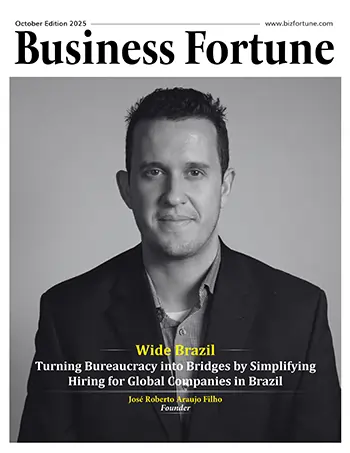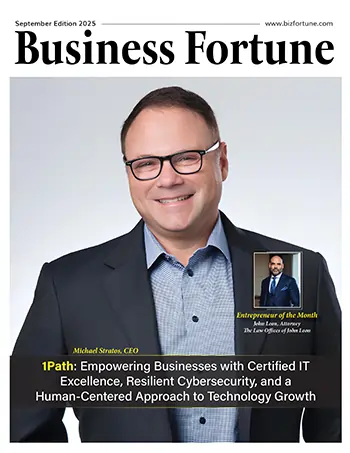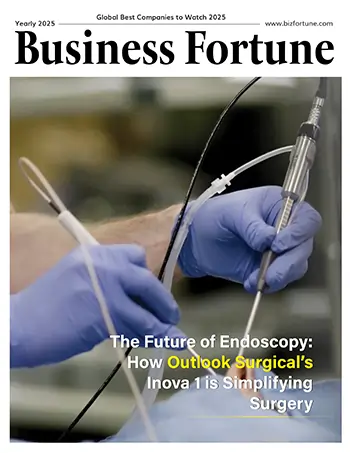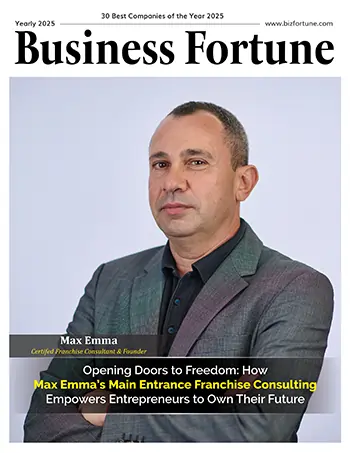Home Innovation Science and Technology Engineering the Future: How Ma...
Engineering the Future: How Maksim Rashchepkin is Revolutionizing America's Electrical Infrastructure
Science and Technology

Business Fortune
17 June, 2025
-Aria Smith
An exclusive interview with the innovative electrical engineer who's bridging industrial expertise with smart grid solutions
In an era where America's aging electrical infrastructure faces unprecedented challenges from electric vehicle adoption, renewable energy integration, and smart home technologies, innovative engineers like Maksim Rashchepkin are pioneering solutions that could reshape how we think about power distribution. The founder and CEO of Max Electric LLC has carved out a unique niche in the San Francisco Bay Area, combining deep industrial experience with cutting-edge residential and commercial electrical solutions.
Rashchepkin's journey from the industrial floors of Belarus to the forefront of America's electrical modernization tells a compelling story of technical innovation, entrepreneurial vision, and the kind of engineering expertise that's becoming increasingly vital to U.S. infrastructure resilience.
Business Fortune: Maksim, your background spans both industrial automation and residential electrical systems. How has this dual expertise shaped your approach to solving America's electrical infrastructure challenges?
Maksim Rashchepkin: The industrial experience gave me something that's relatively rare in the residential electrical field—a systems-thinking approach. When I worked at the Minsk Plant of Automatic Lines, I wasn't just fixing individual components; I was analyzing entire production ecosystems, understanding how energy flows through complex networks, and developing predictive maintenance strategies.
When I moved to the United States and started Max Electric LLC, I brought that same analytical mindset to residential and commercial projects. Instead of just replacing a panel or upgrading service, I look at the entire electrical ecosystem of a building or neighborhood. This perspective has been crucial as we're seeing unprecedented stress on local grids from EV charging, smart home devices, and the push toward electrification of heating systems.
BF: Your company has grown from 2 to 14 employees in just three years, with revenue reaching $1.6 million in 2024. What's driving this rapid expansion?
MR: The growth reflects a convergence of market needs and our unique positioning. We're not just another electrical contractor—we're essentially electrical system consultants who can execute complex modernization projects.
Our sweet spot is what I call "future-ready infrastructure." When a homeowner wants to install an EV charger, we don't just install the charger. We analyze their entire electrical system, assess future needs—maybe they'll add solar panels, a backup battery system, or upgrade to heat pumps—and design a solution that accommodates that growth without requiring another major upgrade in five years.
This approach has resonated particularly well in the Bay Area, where property values justify significant electrical investments and where early adopters are pushing the boundaries of residential energy consumption. We've completed over 2,000 projects, and about 60% of our new business comes from referrals, which tells me we're solving real problems in ways that traditional contractors aren't.
BF: You've mentioned developing an intelligent load management system. Can you elaborate on how this technology addresses current grid challenges?
MR: This is where my industrial background really pays dividends. In manufacturing, we're constantly balancing loads, optimizing energy consumption, and preventing system failures. The residential grid is facing similar challenges, but lacks the sophisticated control systems that industrial facilities take for granted.
Our intelligent load management system essentially creates a localized smart grid that can monitor and redistribute electrical loads in real-time. Think of it as a neighborhood-level solution that prevents local grid overloads while optimizing energy efficiency. Instead of the utility company having to upgrade transformers and distribution lines—which can cost millions and take years—our system can intelligently manage existing capacity.
For example, if multiple homes on a street are charging EVs simultaneously, traditional infrastructure might overload. Our system can coordinate charging schedules, temporarily reduce non-essential loads, and even integrate with local solar generation and battery storage to smooth out demand peaks. The economic implications are substantial—both for utilities and consumers.
BF: From a business perspective, how do you see this technology scaling across U.S. markets?
MR: The scalability potential is enormous, but it requires a different business model than traditional electrical contracting. We're essentially moving from a service-based model to a technology-enabled infrastructure model.
The immediate market opportunity is in affluent suburban areas with high EV adoption rates and aging electrical infrastructure—places like the Bay Area, parts of Texas, the Northeast corridor. These markets have both the economic incentives and the technical challenges that make our solutions valuable.
Medium-term, I see opportunities in partnership with utilities, municipal governments, and large residential developers who want to build future-ready communities from the ground up. The technology we're developing could be integrated into new housing developments, making them more resilient and efficient than traditional neighborhoods.
Long-term, as federal infrastructure spending focuses on grid modernization and resilience, there's potential for our local load management solutions to become part of broader smart grid initiatives. The technology is inherently modular and can scale from individual buildings to entire districts.
BF: What role does regulatory compliance play in your innovation process?
MR: Regulatory compliance isn't just a requirement—it's actually a competitive advantage for us. My experience with diverse international standards, combined with deep knowledge of California's particularly stringent codes, allows us to design solutions that are both innovative and compliant.
We've found that many electrical contractors avoid complex projects because they're intimidated by the regulatory requirements. For us, navigating those requirements is part of our core competency. We've developed standardized processes for permitting, inspection, and utility coordination that allow us to complete complex projects faster than competitors.
For example, we recently completed a 6-unit apartment building electrical upgrade that typically takes 12-18 months, but we finished in under 5 months. That speed comes from understanding exactly what inspectors and utilities are looking for, and designing solutions that meet those requirements from the beginning rather than trying to retrofit compliance later.
BF: How do you view the intersection of technology and workforce development in the electrical industry?
MR: This is both a challenge and an opportunity for American competitiveness. The electrical industry is facing a significant skills gap, particularly in areas that require both traditional electrical knowledge and modern technological sophistication.
We've invested heavily in training—I've personally trained over 6 technicians, 5 of whom have become licensed contractors or team leaders. But we're not just teaching traditional electrical skills; we're teaching systems thinking, data analysis, and technology integration.
The technicians who understand both conventional electrical work and smart grid technologies are going to be incredibly valuable. They're the ones who can bridge the gap between America's existing infrastructure and its future needs. From a business perspective, this expertise is becoming a significant differentiator and allows us to command premium pricing for our services.
BF: What are your expansion plans, and how do they align with broader U.S. infrastructure trends?
MR: Our immediate focus is geographic expansion throughout the Bay Area and Northern California, but we're also developing a technology platform that could be licensed to contractors in other markets. The intelligent load management system we're developing isn't just for our own use—it's potentially a product that could be deployed nationwide.
We're also exploring partnerships with utilities and municipal governments who are looking for innovative solutions to grid modernization challenges. There's significant federal funding available for infrastructure resilience projects, and our technology could be a key component of those initiatives.
The broader trend is toward distributed, intelligent energy systems that can operate semi-autonomously while remaining connected to the larger grid. We're positioning ourselves at the intersection of that trend—with the technical expertise to implement these systems and the business acumen to scale them effectively.
BF: Looking ahead, how do you see your work contributing to America's energy security and economic competitiveness?
MR: Energy infrastructure is fundamentally about national competitiveness. Countries with more reliable, efficient, and resilient electrical systems will have significant economic advantages as we move toward an increasingly electrified economy.
Our work directly contributes to that competitiveness in several ways. First, we're extending the useful life of existing infrastructure through intelligent management rather than costly replacement. Second, we're enabling faster adoption of electrification technologies—EVs, heat pumps, renewable energy systems—that are crucial for both environmental and economic reasons.
Third, we're developing technological solutions and training skilled workers who can implement these solutions at scale. This creates exportable expertise and potentially exportable technology products.
The projects we're completing today in the Bay Area could become templates for modernizing electrical infrastructure nationwide. That's not just good business—it's contributing to America's long-term economic resilience and technological leadership.
Maksim Rashchepkin's Max Electric LLC represents a new generation of electrical contractors who combine traditional craftsmanship with technological innovation. As America grapples with aging infrastructure and evolving energy needs, entrepreneurs like Rashchepkin are proving that the intersection of engineering expertise and business acumen can create solutions that benefit both individual clients and the broader economy.
This interview was conducted at Max Electric LLC's San Francisco headquarters, where Rashchepkin and his team continue developing the intelligent load management systems that could help reshape America's electrical future.




























